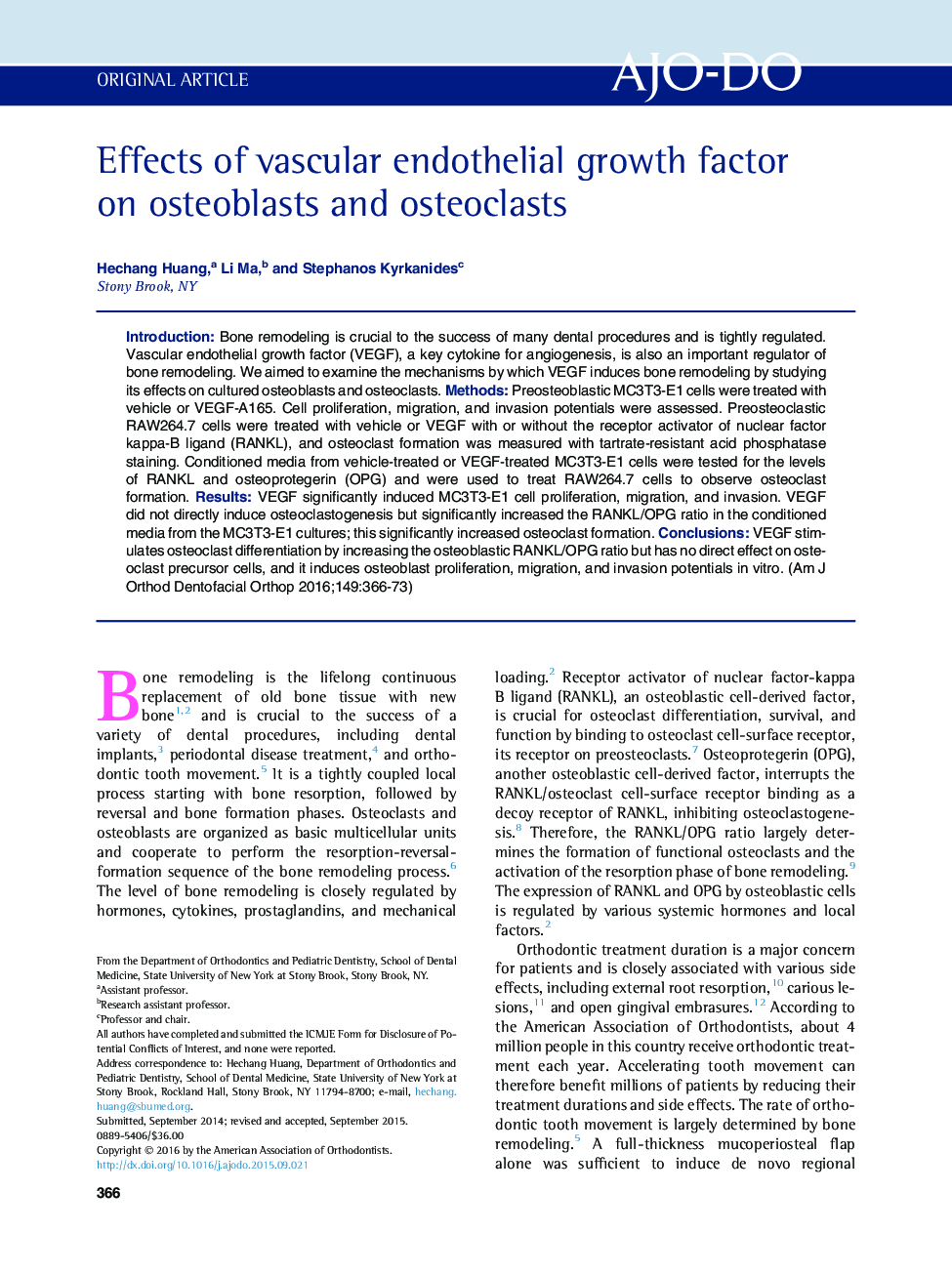| Article ID | Journal | Published Year | Pages | File Type |
|---|---|---|---|---|
| 3115512 | American Journal of Orthodontics and Dentofacial Orthopedics | 2016 | 8 Pages |
•We examined the effects of vascular endothelial growth factor (VEGF) in cell cultures.•VEGF stimulated osteoblast proliferation, migration, and invasion potentials.•VEGF did not induce osteoclast differentiation directly.•VEGF enhanced osteoclast differentiation indirectly.
IntroductionBone remodeling is crucial to the success of many dental procedures and is tightly regulated. Vascular endothelial growth factor (VEGF), a key cytokine for angiogenesis, is also an important regulator of bone remodeling. We aimed to examine the mechanisms by which VEGF induces bone remodeling by studying its effects on cultured osteoblasts and osteoclasts.MethodsPreosteoblastic MC3T3-E1 cells were treated with vehicle or VEGF-A165. Cell proliferation, migration, and invasion potentials were assessed. Preosteoclastic RAW264.7 cells were treated with vehicle or VEGF with or without the receptor activator of nuclear factor kappa-B ligand (RANKL), and osteoclast formation was measured with tartrate-resistant acid phosphatase staining. Conditioned media from vehicle-treated or VEGF-treated MC3T3-E1 cells were tested for the levels of RANKL and osteoprotegerin (OPG) and were used to treat RAW264.7 cells to observe osteoclast formation.ResultsVEGF significantly induced MC3T3-E1 cell proliferation, migration, and invasion. VEGF did not directly induce osteoclastogenesis but significantly increased the RANKL/OPG ratio in the conditioned media from the MC3T3-E1 cultures; this significantly increased osteoclast formation.ConclusionsVEGF stimulates osteoclast differentiation by increasing the osteoblastic RANKL/OPG ratio but has no direct effect on osteoclast precursor cells, and it induces osteoblast proliferation, migration, and invasion potentials in vitro.
